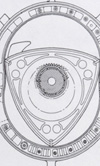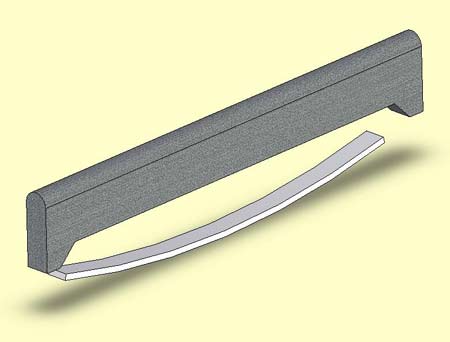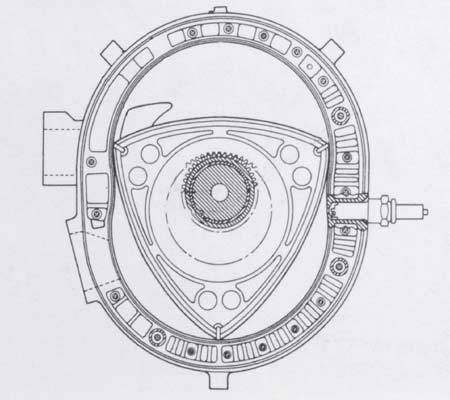Sealing the Wankel engine
 If you think sealing the gap between the piston and cylinder bore of a conventional reciprocating engine presents something of a challenge, then spare a thought for the problems facing the Wankel engine. Once heralded as the rightful successor to the humble piston engine, the rotary Wankel unit gave a smoother power delivery in a more compact form, but early examples suffered greatly from combustion gas sealing issues between the rotor and its housing. And if you examine the dynamics of it all, you begin to see why.
If you think sealing the gap between the piston and cylinder bore of a conventional reciprocating engine presents something of a challenge, then spare a thought for the problems facing the Wankel engine. Once heralded as the rightful successor to the humble piston engine, the rotary Wankel unit gave a smoother power delivery in a more compact form, but early examples suffered greatly from combustion gas sealing issues between the rotor and its housing. And if you examine the dynamics of it all, you begin to see why.
To ensure efficient compression and expansion of the working fluid, the rotor has to be sealed across the apices between the rotor faces and around the sides; and while the system of side seals presents few if any difficulties, the seals at the tip of the tri-pointed rotor (known as the 'apex seals') present some of the biggest issues.
To start with, while the traditional piston ring pack consists of one or two compression rings backed up by an oil control ring scraping the excess oil away from the flooded cylinder bore, lubricating this single apex seal cannot be quite so generous, since this seal is exposed on both sides to combustion events. Effectively therefore it's a total-loss system, and the metering of small amounts of oil into the intake port to lubricate this seal has to be miserly, to keep oil consumption to acceptable levels. Given the marginal lubrication but surprisingly high residence time of this oil in the engine, it is little wonder that the materials selected for the seal require a certain amount of self-lubrication properties if they are to survive.

If the lubrication in this zone could be described only as marginal, the geometry of the situation at least helps. Dynamically, the forces on this seal are comparatively light, set alongside those of the stop-start nature of the piston ring. The lack of a reciprocating motion also ensures that the average sliding velocity of the seal against its housing - much higher than that in a conventional piston engine - should be sufficient, given adequate oil, to maintain a healthy amount of hydrodynamic lubrication at all times.
But as far as seal materials go, the choice these days is very much down to the housing material and specific application. On Norton race motorcycles fitted with rotor housings made from high-strength, high-silicon aluminium alloy (LM13), a two-piece plain cast-iron apex seal is used. This runs directly against a traditional nickel-silicon carbide surface with few if any reported issues. In applications where cast-iron housings are used - perhaps for reasons of cost or durability and where the extra weight is not much of a handicap - the material of choice will most likely be a form of heat-treated acicular cast-iron for normal road-type motoring. It's a higher strength, more shock-resistant material than other cast irons but one that shouldn't be used at temperatures higher than about 300 C.

For more powerful engines, seals of this material will not have enough strength, and in the past carbon-aluminium seals may have been the best approach. However, for the serious racer the only, an albeit somewhat expensive option is to use a fibre-reinforced ceramic apex seal of a type used in the 1991 Le Mans-winning Mazda. With high levels of strength and wear resistance, a single-piece silicon-nitride ceramic strengthened by short silicon-carbide whiskers was developed that was subsequently split into two pieces similar to the earlier Mazda production seal. With the same low weight of the carbon seal, the ceramic seal has much better durability and can be used against the standard housing surface finish, unlike the previous carbon seals.
Often derided for its historic sealing issues the Wankel engine has long since moved on. However, because of the method of lubrication (injecting oil into the intake port), oil consumption - often associated with seal wear - is always relatively high.
Fig. 1 - One-piece apex seal complete with spring
Fig. 2 - Wankel engine cross-section
Written by John Coxon